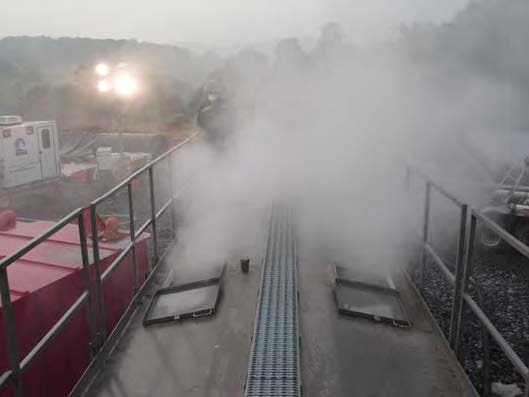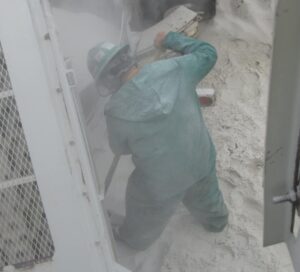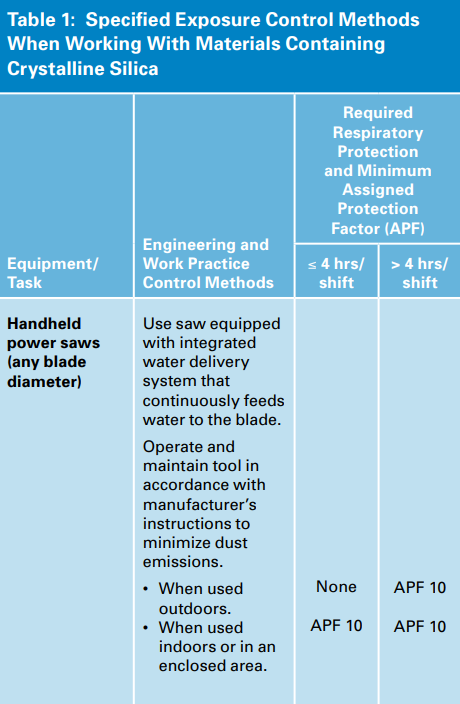Awareness of hydraulic fracturing, also known as “fracking,” has been increasing across the country, mainly related to the environment. As the demand for energy in the U.S. rises with a growing population, hydraulic fracturing likewise grows to correspond with domestic gas and oil production.
What Is Hydraulic Fracturing?
The hydraulic-fracturing process extracts oil and gas through the high-pressure fracturing of rock or shale. High-pressure water and chemicals are pumped into the rocks for thousands of meters vertically and then horizontally to create fractures for extraction. The spaces are filled with frac sand, which is silica sand with small, uniform particles that allow oil and gas to flow through low-permeability rock to keep the fractures open.
What Is Respirable Crystalline Silica?
Dust can include both large, visible pieces and fine or microscopic particles. Airborne material smaller than 100 microns is defined as particulate matter. As a matter of scale, human hair is usually between 70 and 100 microns in diameter.

Particulate matter’s size affects how long the particles can stay airborne and how far they can travel before settling onto surfaces. Because they are so fine, tiny particles can remain in the air longer and travel farther than larger particles can.
Crystalline silica is a common mineral in construction materials such as sand, stone, brick, and concrete. When workers cut, crush, grind, blast, drill, or tunnel with crystalline silica materials, tiny dust particles are created and released into the air.
Respirable crystalline silica refers to particles smaller than four microns in size, also identified as particulate matter 4 (PM4). PM4-sized particles can travel through the air and deep into the lungs, where the crystalline silica is believed to be most hazardous.
What Are the Main Concerns About Frac Sand?
Some estimates suggest that an average fracking site will use between 1 million and 7 million pounds of frac sand over its lifespan. These massive amounts often involve truck traffic and road congestion as the frac sand is hauled and poured.
This movement of frac sand produces exposure to silica dust, which the National Institute of Safety & Health has identified as the hydraulic-fracturing procedure’s main health risk. Inhalation of silica-dust particles is linked to lung disease, lung cancer, cardiovascular disease and increased mortality.
Public-health concerns extend to contamination of water supplies as well. Beyond the settling of silica dust into open water sources, hydraulic fracturing includes frac fluid, which consists mainly of water and quartz sand. It also contains chemicals to ensure efficiency and lessen wear and tear on injection equipment, including additives like acids, corrosion inhibitors, iron-control components and friction reducers.
Frac fluid is pumped at a high pressure far below the ground surface into the rock and shale. As a result, the fluid can dissolve parts from geological formations, including petroleum constituents such as polyaromatic hydrocarbons and minerals. The resultant liquid might then remain in place or return as flowback-produced water or wastewater.
The OSHA Respirable Crystalline Silica Standard
The high levels of silica dust at fracking sites prompted the OSHA Respirable Crystalline Silica Standard (29 CFR 1926.1153), requiring employers to protect workers from silica dust exposure.
Employers can either use a control method specified in the standard’s Table 1 or measure workers’ exposure to silica and independently decide which dust controls work best to limit exposures in their workplaces to the permissible exposure limit (PEL).
According to Table 1, heavy equipment and utility vehicles used to abrade or fracture silica-containing materials or used during demolition activities involving silica-containing materials must be operated from within a closed cab. When workers are engaged in the task outside of the cab, water or dust suppressants must be applied as needed to minimize dust emissions.
Employers who do not fully implement the control methods in Table 1 must follow practices such as determining the number of silica workers exposed to a defined PEL during an average eight-hour day. They must also use dust controls and safer work methods to protect workers from silica dust exposure above the PEL.

The OSHA Respirable Crystalline Silica Standard further calls for employers to:
- Establish and implement a written dust-exposure control plan and designate a proper person to implement it
- Offer medical exams, including chest X-rays and lung-function tests, every three years for workers required by the standard to wear a respirator for 30 or more days per year
- Train workers on the health effects of silica exposure, workplace tasks that can expose them to silica dust and ways to limit exposure
- Keep records of workers’ silica exposure and medical exams
Further Frac Sand Dust Control
Beyond regulatory steps to control dust and respirable particles, industrial advances have been made to further protect workers and communities from the dangers of silica dust.
Newer equipment has been designed to minimize fugitive silica dust. In some cases, older equipment also can be modified or rebuilt to aid in frac sand dust control.
Another option is the installation of specially designed dust collectors on equipment such as frac sand movers. These systems can help notably decrease the dust that is released.
Local governments and agencies can assist in protecting health as well through proper zoning and direct negotiation with site operators concerning best practices.
Benetech: Your Ally in Safe Bulk Material Handling Solutions
Here at Benetech, we are always on top of the current issues that matter to you as a bulk material handler. We welcome each opportunity to answer your questions about achieving a safer, more productive operation. If you would ever like to discuss greater dust control or the dangers of silica dust, contact us at (630) 844-1300 to speak with a specialist.
Posted in Dust Control, and Fugitive Dust Emissions
